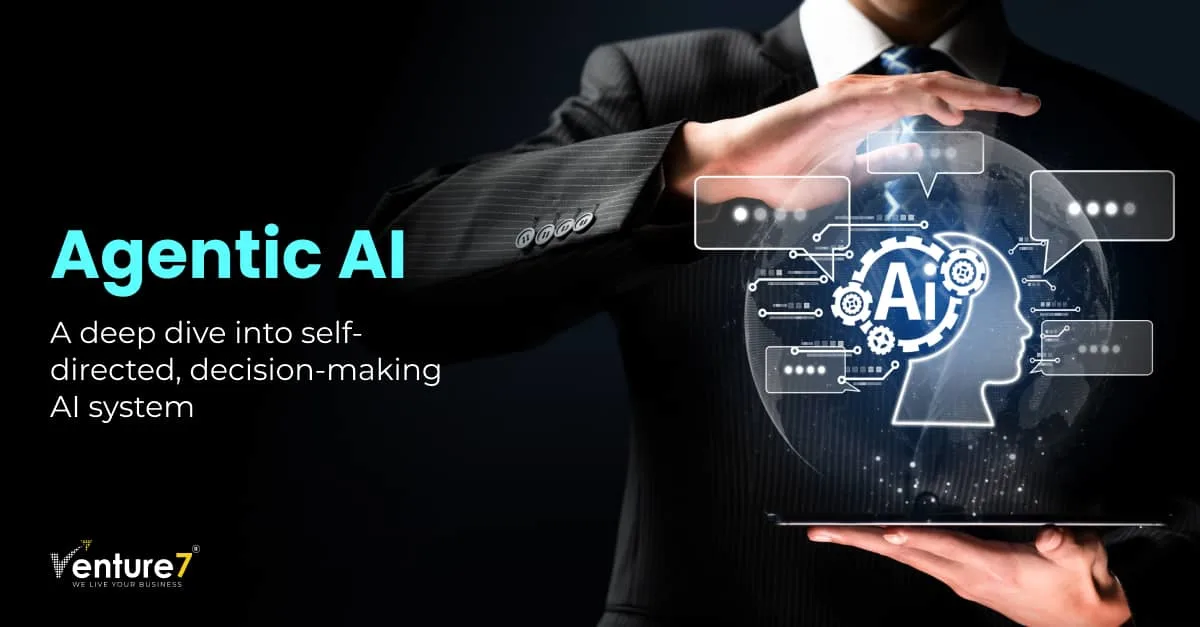Most AI systems work today in the manner of following specific instructions. You ask a chatbot a question, and depending on the data it has, it gives you an answer. You put a destination into a navigation app, and it calculates the best route. All these are reactive AI systems; they react to inputs and do not plan or take action on their own.
Agentic AI, on the other hand, is proactive. Rather than merely being reactive, it acts with purpose. It is capable of identifying goals, breaking them down into steps, adjusting its approach based on new information, and carrying out tasks from start to finish all by itself.
Here’s a simple way to think about it:
Regular AI is like a GPS. It finds the best route when you enter a destination.
Whereas Agentic AI is like a self-driving car. It doesn’t just follow directions but decides when to speed up, slow down, change lanes, or reroute based on traffic and road conditions—all without waiting for your input.
This ability to operate independently makes Agentic AI a major step forward.
How Does Agentic AI Work?
To function without constant human oversight, Agentic AI relies on four main capabilities:
1. Understanding the environment
Agentic AI collects data from all sources—text, images, sensor data, or databases—and then interprets the information to comprehend the situation in light of which it has to decide.
2. Goal Setting and Prioritization
Unlike the traditional AI that would require your command to take action, Agentic AI defines its goals by itself according to the situation. It prioritizes tasks in the best possible way to finish them.
3. Action
Once a plan is chalked out, it proceeds to the part where execution of those plans is undertaken, adapting in real-time if needed. And in case, a problem arises, it doesn’t halt but finds alternative solutions to complete that task.
4. Learning from Experience
Agentic AI learns from experiences by reasoning about the outcome of its action. If the choice it made led to a good outcome, it would reinforce that behavior; otherwise, it changes the approach it will use the next time.
How is Agentic AI Different from Generative AI?
While both Agentic AI and Generative AI are powerful tools in the world of artificial intelligence, they serve different purposes and function in distinct ways.
- Generative AI is designed to create new content. It can generate text, images, videos, or even music based on patterns it has learned. This type of AI excels in producing creative outputs, such as writing essays or designing graphics. However, Generative AI still needs input or prompts to generate anything. It doesn’t take action on its own but rather responds to instructions from humans.
- In contrast, Agentic AI takes a more autonomous approach. Rather than just generating content based on input, it decides what action needs to be taken next. This type of AI doesn’t need prompts; it continuously makes choices and carries out actions without constant input from humans. It can perform tasks like managing a process, coordinating with other systems, or solving complex problems without a specific order from a human being.
Where Is Agentic AI Used?
Agentic AI is making a difference in various sectors. Some of the application areas of agentic AI include:
1. Customer Support
With the ability to carry the whole customer engagement through to the end without faltering, Agentic AI can follow up on pending issues, schedule appointments and reminders for you, and even forecast what customers need based on past interactions.
2. Health Care
Some of the AI systems can now help doctors diagnose symptoms, recommend treatment, and even do the management of the patient’s record. They proactively take steps to support doctors in making decisions.
3. Financial Services
Agentic AI will also be used in the management of investments: analyzing market trends, executing trades, and rebalancing portfolios without human intervention. The same AI can be used in transaction surveillance to identify frauds.
4. Autonomous Systems
From robotic warehouses to self-driving cars, Agentic AI is allowing machines to function without human oversight, making split-second decisions based on live data.
Best Practices to Implement Agentic AI
- Start with a Clear Goal
- Train the AI with Quality Data
- Test and Monitor Regularly
- Address Ethical Concerns
The Future of Agentic AI
One thing is clear: Agentic AI not a passing trend because companies are investing billions into making AI more autonomous, and its role in industries will only expand.
With this, they are bound to improve, and the systems will likely be more reliable and adopted not just in businesses but also in our everyday lifestyle decisions.
Final Thoughts
Agentic AI is elevating AI to new heights like systems that can make independent decisions. It will therefore make businesses much more efficient, reduce repetitive work, and change how we talk to technology altogether. But with great power always comes responsibility, so as Agentic AI develops, it will really be important to think about its usage, control, and safeguards. And that is something that needs attention.
Integration of Agentic AI in business operations requires working with experts in Agentic AI development services. At Venture7, we focus on the creation of such solutions driven by AI that assist businesses in automating, optimizing, and scaling easily. In a world where AI is constantly evolving, the right technology and expertise are going to make all the difference for you and your business to exist in the future.





